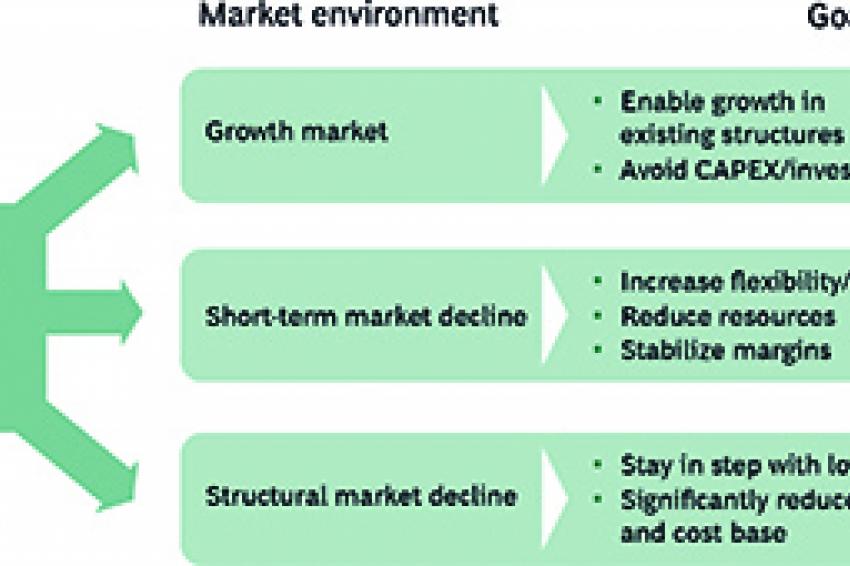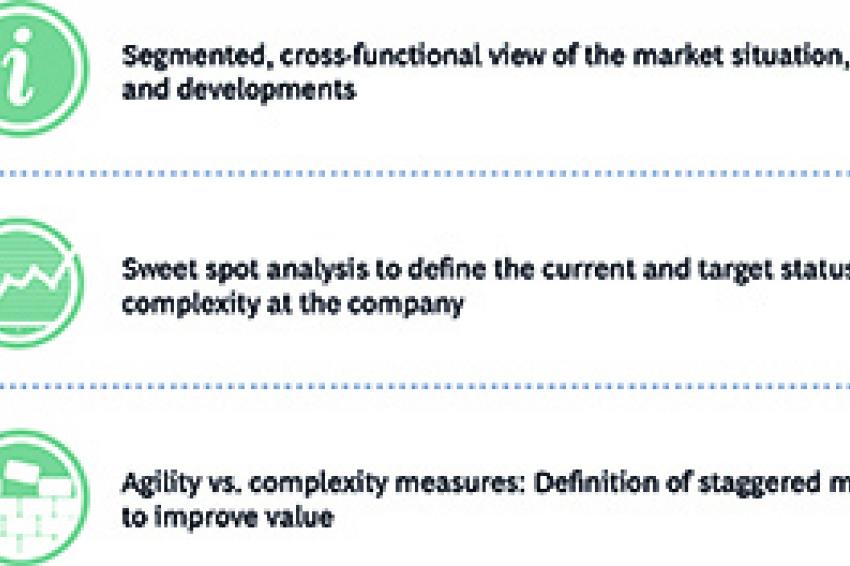Flexible Customers—Inflexible Supply Chain?
How the Chemicals Industry is Moving to Satisfy Increasingly Differentiated Customer Demand
In chemicals, to an extent not seen in almost any other industry, increasingly differentiated customer demand is running up against a relatively inflexible supply chain. Studies show that this dilemma will intensify in the future. While European chemicals companies have done a good job of adapting their business models to various customer segments, they still need higher flexibility on the different steps of the supply chain.
Two trends, running counter to each another, can be observed in the European chemicals industry. On the one hand, customer demand has long been becoming increasingly differentiated, resulting in higher complexity. On the other hand, companies are still striving to achieve cost advantages in a difficult market environment with scale effects in their supply chains.
The dilemma is clear: How to satisfy differentiated customer demand with a high-scale supply chain? Below, we describe approaches to solving this dilemma. First, however, it is important to define the market environment and goals of possible initiatives to address the described dilemma (Fig. 1).
Pursue one goal, but don't neglect the other
Two approaches have proven effective in solving dilemmas like this: Reducing unnecessary complexity and improving agility. But if a company does one without neglecting the other, true competitive advantage can be achieved with supply chain management-when the reduction of complexity and the improvement of agility are complementary.
Approach 1: Reduction of Complexity
The biggest challenge in the management of supply chain complexity is distinguishing between valuable and unnecessary complexity. Therefore, upon starting a course of complexity reduction, a company must analyze which product and service features are perceived by customers as valuable and which they consider unnecessary or do not even notice. At the same time, the company must determine which products and services in the supply chain are the sources of the most value-impairing complexity.
In the so-called "handshake approach," these two perspectives are combined and visualized, such as in a heat map. This allows the company to identify the largest unnecessary drivers of complexity.
Approach 2: Improvement of Agility
Improving agility means taking specific action to increase the flexibility and speed of the supply chain. A supply chain focused purely on efficiency is often lacking on these two counts.
When the agility of the supply chain needs to be improved, all units are analyzed for the degree to which they support the sustainable realization of higher flexibility and speed for the fulfillment of customer demand. In particular, this includes supply chain transparency, length, and design, the quality of demand forecasting, planning processes, make-or-buy decisions, and inventory management.
Whether one approach or the other seems more important-that is, if the desired basic optimization of supply chain performance can be better achieved by the reduction of complexity or by the improvement of agility-or whether the two approaches can be applied in a complementary manner ("pursue one goal, but don't neglect the other"), can often be decided with a direct comparison of possible measures.
Concrete decisions must often be made in regard to the following questions:
Does it make more sense to take a product group from the market (to reduce complexity) or to outsource its production (to improve agility)?
- Is product diversity the reason for weak delivery performance (a hallmark of complexity) or does it stem more from low-quality, undifferentiated demand forecasting (a lack of agility)?
- Are delivery times too long because production facilities have to deal with frequent capacity bottlenecks (complexity) or because suitable supply chain points for decoupling have not been defined (insufficient agility)?
Identification of an Ideal Set of Measures
The approach developed by The Boston Consulting Group and proven in our daily work with clients is comprised of three steps and helps to identify an ideal set of measures for optimizing supply chain performance.
In step 1, the market is assessed for the exact capture of customer needs. In step 2, the company's agility and level of complexity are determined. Where does the company currently stand in regard to these two aspects, and where does it want to stand? In step 3, staggered measures are defined for short-, medium, and long-term value improvement at the company (Fig. 2).
Measurable Improvement Proven
Agility and complexity initiatives affect the same performance metrics, but at different times. The advantage: Measures that will quickly allow the overall program to finance itself can be initiated first ("fund the journey") and structural measures tackled later.
The procedure developed by BCG brings measureable improvement in three areas:
- Direct cost reduction-such as with higher production capacity utilization and thus the avoidance of capital expenditures (CAPEX); with higher scale effects in procurement from product simplification; or with lower production errors from more effective planning processes
- The release of tied capital on the strategic and operative levels-with possibilities for network consolidation arising from freed capacities and inventory reduction
- Growth from the positive effects of more efficient use of sales capacity, and lower time to market from improved agility.
Of course, the scope of improvement depends on the starting situation at the respective company. Many companies have already achieved good ratings in key ratios such as capacity utilization (e.g., OEE) or inventory range (DIO). Nevertheless, in most cases, significant improvement is still possible.
On this topic, BCG's projects for its clients regularly achieve production cost (COGS) reductions of 3-5%, and-despite already good inventory management-a further 15-20% reduction of relevant tied capital.
These numbers make clear that European chemicals companies, in striving to prevail with successful business models in an increasingly differentiated and vertically integrated market, need the right balance between complexity reduction and improved agility. Only with these two complementary approaches can the supply chain be reinvented and significant value added sustainably achieved: when flexible customers meet a flexible supply chain.
Contact
BCG The Boston Consulting Group GmbH
Ludwigstr. 21
80539 München
Germany









